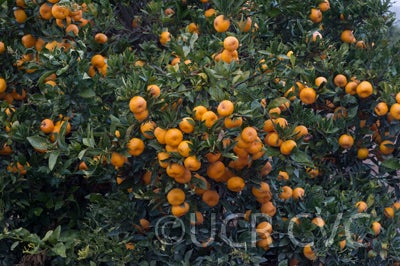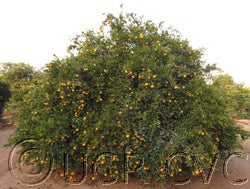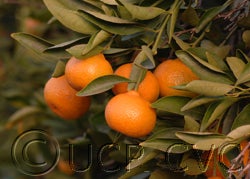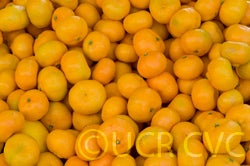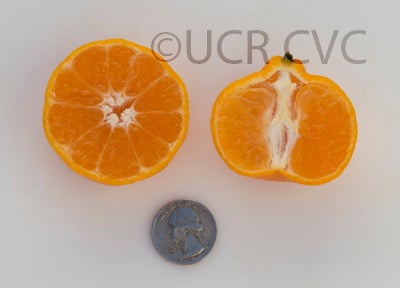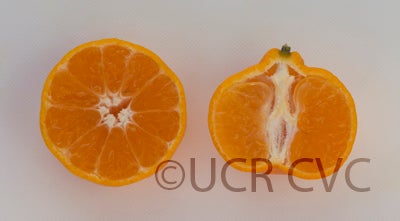Citrus kinokuni mukakukishu
CRC 3906
PI 539530
VI 433
Source
Received as budwood from Japan via Glenn Dale (requested by W.P. Bitters), 1983.
Parentage/origins
Parents unknown.
Rootstocks of accession
Carrizo citrange
Season of ripeness at Riverside
December to January
Notes and observations
EMN, 11/23/1988: Very small mandarin. Sweet & seedless, peels & sections well but is already starting to get dry & granulated at apical ends of fruits. Too small for commercial of backyard potential; excels only in being "cute", but this might appeal to some people.
EMN, 11/13/1989: Very small size again. Sweet enough to eat already. Probably not promising on basis of size.
Description from The Citrus Industry Vol. 1 (1967)
"This species is the kishû mikan of Japan. The fruit is small, somewhat oblate, depressed at both ends, orange-colored, and glossy. The thin, comparatively tight rind is easily peelable and fragrantly aromatic. The flesh is firm, meaty, and pleasantly sweet in flavor. Seeds are few, polyembryonic, and have pale green cotyledons. Fruit maturity occurs in early midseason.
The kinokuni is said to be a very old species of Chinese origin and one of the earliest introduced into Japan, where it is still popular because of its pleasant flavor and rich fragrances Tanaka (1954, p. 136) states that at least four varieties are known, the largest of which is Hirakishu. Mukakukishu is a completely seedless variety."
Availability
Commercially available in California through the Citrus Clonal Protection Program. Click here to order budwood.
USDA Germplasm Resources Information Network page for Seedless Kishu
